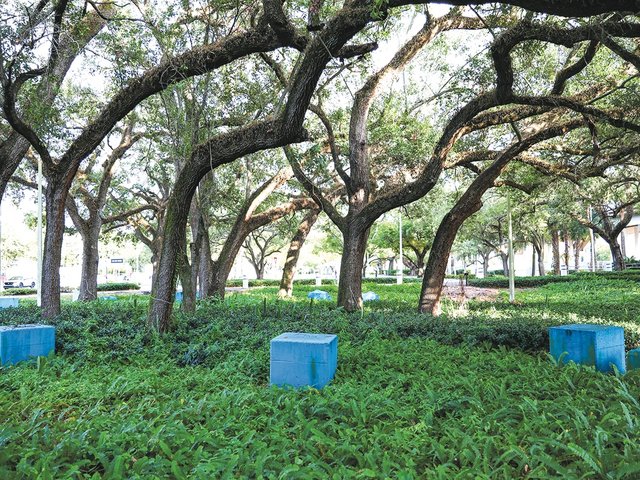A new site-specific installation on Faena Beach invites visitors to consider the fraught legacy of colonisation and the ongoing impact of extractive practices both on the natural world and on Indigenous existence. Created by the Tlingit/Unangax artist Nicholas Galanin and commissioned by the non-profit Faena Art, the sculpture takes the form of a wrecked Spanish galleon, with only its masts, sails and rigging visible towering more than 40ft above the sand, as if the rest of the ship were buried underneath—a metaphor for the fragility of empire and failed conquest.
A call to action
The title of the work, Seletega (run, see if people are coming/corre a ver si viene gente), uses the language of the Calusa people native to south-western Florida, with the word seletega alongside its approximate English and Spanish translations, which serves as “a call to awareness and action”, Galanin tells The Art Newspaper. “In the context of this installation, it speaks to our need to recognise and respond to what’s approaching, whether it be the ongoing repercussions of colonialism, the destruction of ecosystems or the threat to Indigenous sovereignty.”
The languages of the Calusa and Tequesta people native to the area have been nearly lost, seldom seen in historical narratives. This is evidence of erasure and forced silencing caused by colonists—in this case, represented by the English and Spanish translations in Galanin’s work. The artist furthers this representation of colonisation with the wrecked form of the galleon as a symbol of conquest gone awry. The partially buried state of the work also references the Spanish conquistador Hernán Cortés, who led an expedition to Mexico in 1519 to gain wealth and power for Spain. Upon landing, Cortés ordered his ships to be destroyed, sending a message that there would be no return. The event gave rise to the phrase quemar las naves (burn the ships), meaning to cut ties or remove the possibility of retreat.
“In this work, the non-negotiable idea that retreat is no option references the destruction of the environment, including oppressive, violent systems of control,” Galanin says. “The shipwreck ties the past to the present, suggesting that the colonisation of Indigenous land and the exploitation of resources may not have been as victorious or inevitable as history has often portrayed. Instead, this wreckage speaks to the possibility of imagining new, alternative futures.”
On the sails of the ship, Galanin has painted questions in English and Spanish that read: “What are we going to give up to burn the sails of empire? Qué vamos a renunciar para quemar las velas y los aparejos del imperio? What are we going to build for our collective liberation? Qué vamos a construir para nuestra liberación colectiva?” In doing so, he invites visitors to reflect on the continued impact of colonialism and inspires them to see the possibility for change.
“I hope viewers walk away asking themselves these questions, reflecting on their roles in systems of power and thinking critically about what needs to be dismantled for something better to emerge,” Galanin says. “The piece is temporary, much like the empires and economies it critiques, but building a future rooted in liberation and justice is ongoing. I hope that resonates with the viewers and sparks action beyond the beach.”






